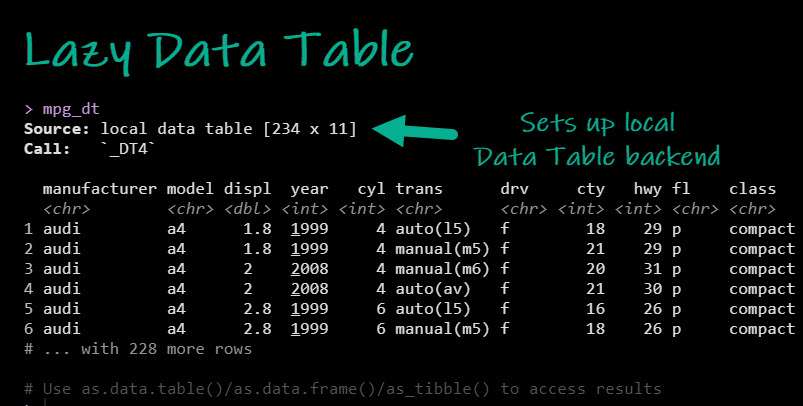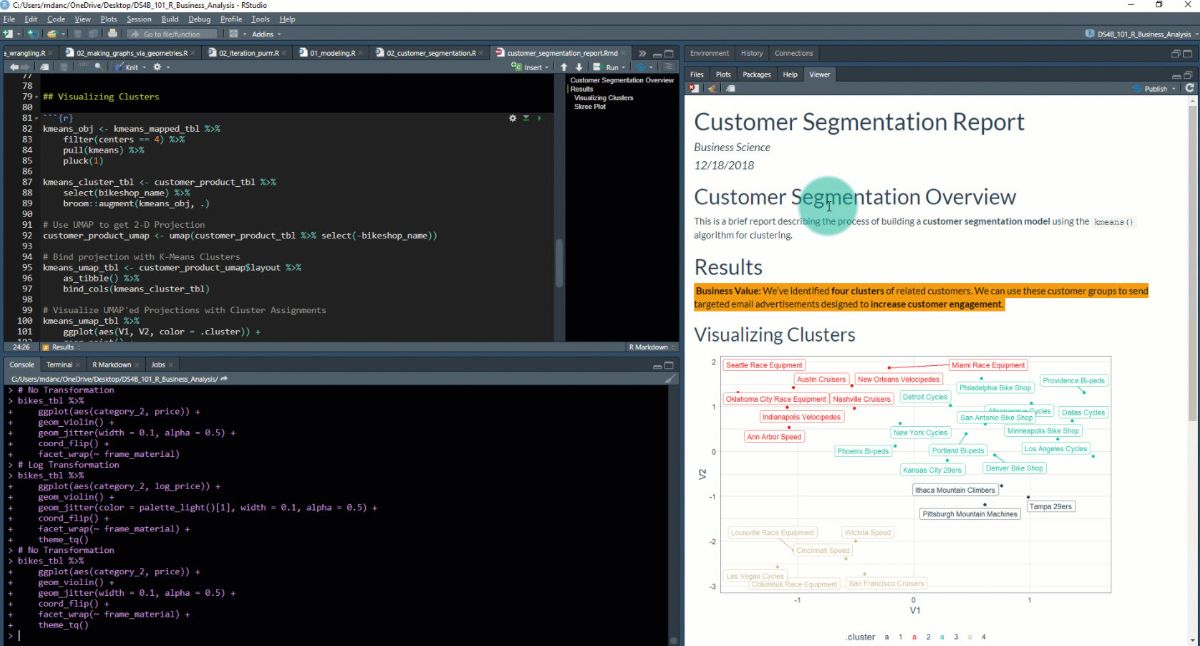Not data.table vs dplyr... data.table + dplyr!
Written by Matt Dancho

This article is part of R-Tips Weekly, a weekly video tutorial that shows you step-by-step how to do common R coding tasks.
Here are the links to get set up. 👇
 (Click image to play tutorial)
(Click image to play tutorial)
The data.table backend to dplyr
There’s a new R package in town. It’s called dtplyr. It’s the data.table backend to dplyr. And, what it get’s you is truly amazing:
- Enjoy the 3X to 5X
data.table speedup with grouped summarizations
- All from the comfort of
dplyr

Make insanely fast grouped summaries by
leveraging data.table with dtplyr then quickly visualize your summaries with ggplot2.
Before we get started, get the Cheat Sheet
The most powerful tool in my arsenal is NOT my knowledge of the key R packages, but it's knowing where to find R packages and documentation.
The Ultimate R Cheat Sheet consolidates the documentation on every package I use frequently (including dplyr, data.table, and dtplyr).

If you tab through to page 3, you'll see a section called "Speed and Scale". You can quickly see options to help including data.table, dtplyr, furrr, sparkly, and disk.frame. Enjoy.

Get started with dtplyr
The first thing you'll want to do is set up a Lazy Data Table usng the lazy_dt() function.

So what happened? We now have a pointer to a data.table. This is a special connection that we can use to write dplyr code that gets converted to data.table code.

Translating dplyr to data.table
This idea of a data.table backend to dplyr is insanely powerful. Here's an example of a dplyr grouped-summarization that gets translated to data.table for a speedup.
- Start with lazy datatable connection object
- Group by the manufacturer and cylinder columns
- Summarize with the new
dplyr::across() function
- Ungroup the lazy data.table

The dtplyr backend does the heavy-lifting, converting your dplyr code into data.table code.

When your done wrangling...
Just collect and visualize
Use the collect() function or as_tibble() function to apply the data.table translation to your lazy data table and extract the results.

The ggplot2 code produces this visualization. We can easily see:
- Honda has the highest City Mileage in small engine cars (24.4 MPG)
- Audi has the highest City Mileage in large engine cars (16 MPG)

Learning Data Wrangling with Dplyr
It should be obvious now that learning dplyr is insanely powerful. Not only is it beginner-friendly, it unlocks data.table, the fastest in-memory data wrangling tool. Here are a few tips.
Pro Tip 1 - Use the Cheat Sheet
Dplyr is an 80/20 tool shown on the first page of my Ultimate R Cheat Sheet.
Click the "CS" next to dplyr to get the Data Wrangling with Dplyr Cheat Sheet. Woohoo!

Clicking the "CS" opens the Data Transformation with Dplyr Cheat Sheet. Now you're ready to begin learning Dplyr.

PRO TIP 2 - Learn Dplyr in my Business Analysis with R Course
It might be difficult to learn Dplyr on your own. I have a course that walks you through the entire process from analysis to reporting.
The R for Business Analysis 101 Course is the first course in my R-Track program . You'll do a ton of data transformations while you make a two reports:
- Customer Segmentation Report
- Product Pricing Estimation and Gap Analysis
Here's the Customer Segmentation Report.

In Summary
You just sliced and diced data with dtplyr - the data.table backend to dplyr.
You should be proud.
This article is part of R-Tips Weekly, a weekly video tutorial that shows you step-by-step how to do common R coding tasks. Join today.